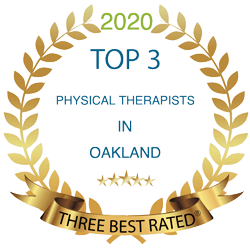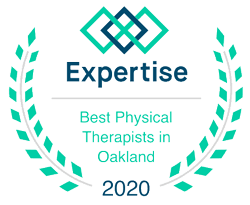Did you know that the oldest marathon finisher is British citizen, Fauja Singh? At the Toronto Waterfront Marathon in Canada, the 100-year-old finished the race in a time of 8 hours, 25 minutes and 16 seconds. He ran his first London marathon in 2000 at the age of 89 and went on to compete in eight more marathons.
Fauja Singh is a great example of showing that it’s never tool old to start running. Running is a great way to get exercise, but it’s also a high-impact activity that can lead to injuries if you’re not careful. Novice runners are twice as likely to get a running-related injury when compared to active runners. Additionally, 60% of all running-related injuries are caused by increasing mileage too quickly.
People new to running or rediscovering the sport will benefit from a professional approach that helps you build your mileage and improve your pace while reducing the likelihood of injury. Our physical therapists in San Diego want to offer you best tips to start your running practice while avoiding novice injuries.
- Managing Beginner’s Expectations
As you start to run, you may experience discomfort and soreness during running and several days after. Discomfort and soreness are common and expected for new runners. The body must adapt to your new activity both on a muscular and cardiovascular level. As you train, shortness of breath and acute muscle soreness should begin to go away.If you experience pain, you may temporarily try to reduce the load you are putting on your body. If the pain persists, don’t hesitate to see your doctor or physical therapist for further evaluation.
- Pay Particular Attention to Your Running Cadence and Stride Length
One way to reduce the impact (load) of running on your body is by managing your cadence and stride length. This helps reduce the impact on your body, allowing it to heal and helping you avoid injury while you train.You can determine your cadence by counting the total number of steps you take in a minute. A quick tip to help with this process is to count the number of times your left foot hits the ground in 30 seconds, double that to get the total for 60 seconds and double that number again to get the total steps for both feet. This is your cadence. The higher the cadence, the less impact each step has on your body.
Stride length also impacts how much of a load you’re putting on your novice runner’s body. Stride length is the distance between your feet at the full length of running stride. Shortening your stride also reduces the load on your body.
By adjusting your running stride and cadence, you reduce the load on your body and lower your chance of becoming injured.
- Approach Strength Training with Running-Specific Exercises
A strength routine including squat variations, lunge variations, step-ups, and calf raises will far exceed the benefits of isolated bicep curls and leg extensions. Running specific, weight-bearing exercises help your body adapt to the activity and avoid injury.These weight-bearing exercises also have the added benefit of increasing bone mass and tendon strength, reducing the risk of stress fractures and tendon injuries.
- See a Physical Therapist if Pain Persists Despite Reducing Training Load.
Physical therapists are movement experts trained to provide one-on-one assessments for individualized injury prevention, biomechanical advice & exercise prescription. Any pain you feel when starting a new activity should be acknowledged and acted on if it persists. A trained professional will be able to evaluate you, identify the issues, and help you solve them.By carefully increasing mileage, monitoring your cadence and stride, and proper strength training, you should safely move out of the novice runner category as you improve your abilities without serious injury.
It’s important to note that you should always check with your doctor before starting a new exercise program, particularly if you haven’t exercised in a long time, you’re pregnant or you have a medical history of any lung or heart related issues.
If you a looking for an experienced and professional approach to your physical therapy needs, consider getting in touch with us today. Our injury prevention training will have you crossing your finish line no matter where you are in your fitness journey.



